Description
Railroad Short Name: NS
General Electric wrestled the title of top domestic locomotive builder from EMD during the late 1980s with their Dash-8 series. GE once again positioned themselves to shakeup the locomotive world yet again less than a decade later. Entering the 1990s, GE completely revamped their locomotive lineup by utilizing customer feedback, learning from experience gained from previous locomotive series, and improvements in technology.
A single C44-9W demonstrator unit, numbered 8601, made its debut in 1993 (and later became C&NW 8601). While similar at first glance to predecessor models like the C40-8 and C40-8W, the Dash-9 series featured a few notable physical differences. Built on a slightly longer platform that allowed for a massive 5,000 gallon fuel tank, Dash-9s also featured thicker radiator “wings” at the rear of the carbody. This is usually the quickest way to differentiate them from previous models.
Thanks to its long production span and customer options, small detail differences could be noted between various customer orders. This includes changes with HVAC system vendors (the large “A/C” box behind the cab on the conductors side), engine cab profile, radiator lifting lugs, hood end, trucks, fuel tank, stepwells, operator’s cab, and even handrail profiles.
The C44-9W proved to be extremely popular over its production span with over 3,500 locomotives being sold new to ATSF, BC Rail, BNSF, CN, C&NW, NS (including 100 spartan cab equipped versions, nicknamed “Top Hats”), QNS&L, SP, and UP.
Locomotive Features:
Era: 2005 – present
Road numbers 9550 and 9555
- Era: 2000 to 2013, NS series 9535-9559, built 2000
- Front high (cab) mounted headlight
- Operating front and rear deck mounted alternating LED ditch lights
- Operating LED front, rear, and side walkway lights
- Tall snowplow with open doors and grab irons
- 5-step stepwells with see through steps
- Walkway with front and rear anticlimber
- Wide profile end handrails
- Nose door without window
- Two-piece nose top grab irons
- Standard battery box doors
- GE safety cab with three (3) side windows
- Cab interior with standard control stand for engineer and desktop for conductor
- In cab grade crossing camera
- Dual large Sinclair “ice skate” communication antenna and small Sinclair “ice skate” End of Train (EOT) telemetry antenna
- Dayton Phoenix (DPG) Model 280260 HVAC Unit
- Late angled engine cab profile
- Late dynamic brake exhaust
- Late electrical cabinet with step on rear
- Lost-wax brass Nathan AirChime K5HAR2 horn mounted on engine cab
- Late non-flanged exhaust stack housing
- Late radiator door grilles in alternating heights
- Low-mounted rear sandfiller
- Electric handbrake without brake wheel and with electric brake actuator on right front truck sideframe
- Late lifting lugs on ends of radiator wings
- Separate air tanks with lower mounting brackets, connector pipe and connector pipe cover
- Wabtec Graham White 994-500 Series Air Dryer
- Fuel tank mounted electronic bell
- Single fuel fills per side
- 5,000-galon fuel tank with angled weld seam and clean out on left side
- Round and vertical analog fuel gauges along with digital fuel gauge
- Late Hi-Ad trucks with cantilever struts on right front and left rear sideframes
- Spare coupler knuckle holders on rear pilot face
- Paint color matches Tru-Color Paint color: TCP-010 Black
Rivet Counter DASH 9-44CW Locomotives Also Feature:
- Fully-assembled
- Several different road numbers
- Operating front, rear, and side LED walkway lights
- Printed and LED lighted number boards
- Four (4) cabs
- “Gullwing” with three (3) side windows
- “Gullwing” with four (4) side window
- Standard safety cab with low headlight
- Standard safety cab with high headlight
- Dayton Phoenix (DPG) Model 280620 or Motive Equipment (MEI) ME7000 HVAC Units
- Hi-Ad trucks with separately applied brake cylinders, air plumbing, and struts (per prototype)
- Early with reinforcement bulge
- Late with cantilever struts on right front and left rear sideframes
- Late with non-cantilevered struts on all four sideframes
- Late with cantilever struts on all four sideframes
- Rotating axle bearing caps
- Nose door with or without window
- Four (4) step or five (5) step stepwells with see through steps
- Narrow or wide profile end handrails
- One or two-piece nose top grab iron(s)
- Early (curved), late (angled) or late (angled) with “tri-fold” power assembly access doors engine cab profile
- Early flanged or late non-flanged exhaust stack housing
- Early or late lifting lugs on ends of radiator wings
- Low or high rear sand filler
- Separate air tanks with lower or upper mounting brackets
- Three (3) types of fuel fills per side: single; dual; dual with rear fill blanked
- Spare coupler knuckle holders on truck sideframes or rear pilot face
- GE “nub” pattern walkway tread
- Accurately profiled frame with separately applied plumbing and traction motor cabling
- Detailed cab interior with separate floor, rear wall, seats, and desktop controls or control stand, per prototype
- Tinted cab side windows
- 26 individually-applied etched metal see-through radiator intake and exhaust grilles on sides and top of radiator compartment
- “Bathtub” exhaust silencer
- 5,000-gallon fuel tank
- Factory-applied detail parts: wire grab irons, snowplow, spare knuckles, trainline hoses, 3-hose MU clusters, uncoupling levers, windshield wipers, mirrors, sunshades, air tanks, fuel tank mounted bell, brake wheel, exhaust stack and more
- Semi-scale coupler buffer
- Durable metal semi-scale Type E knuckle couplers
- Motor with 5-pole skew wound armature
- Dual flywheels
- All-wheel drive
- All-wheel electrical pick-up
- Directional LED headlights
- Printing and lettering legible under magnification
- Operates on Code 70, 83, and 100 rail
- Packaging safely stores model
- Minimum Radius: 18”
- Recommended Radius: 22”
DCC & sound ready locomotives also feature:
- Operate on DC layouts
- DCC ready with 21-pin connector

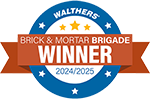
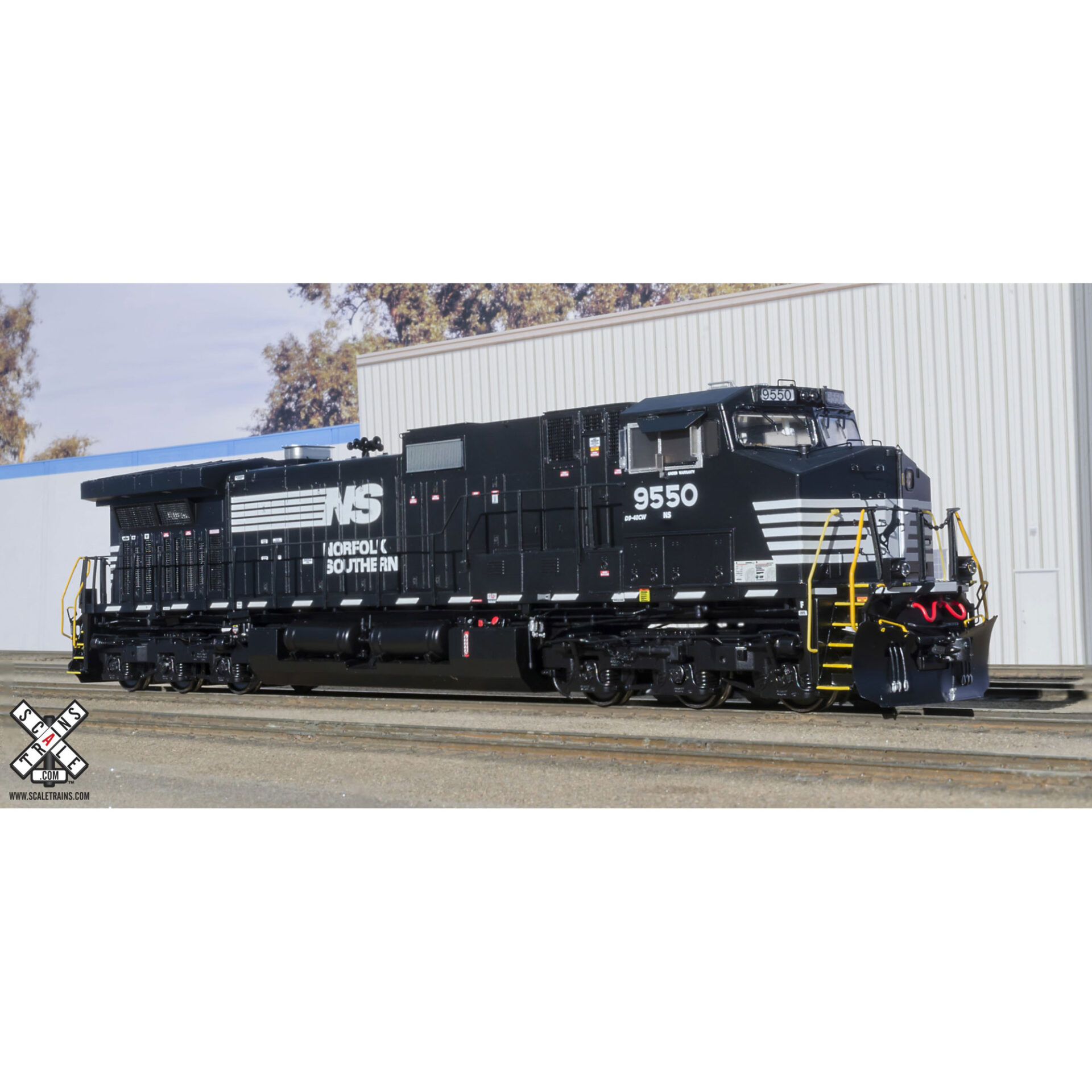
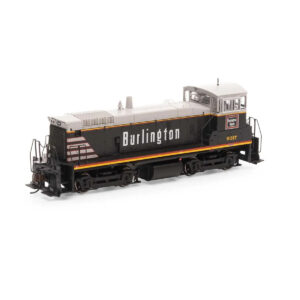
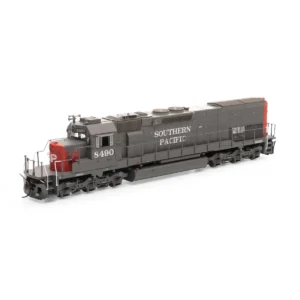
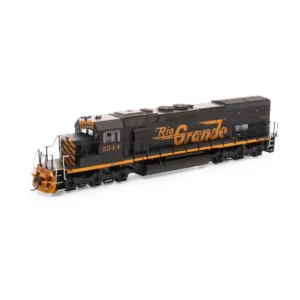
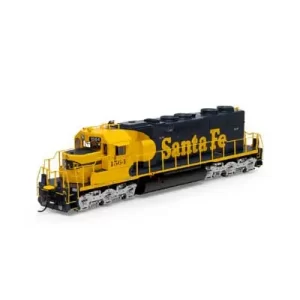
Reviews
There are no reviews yet.